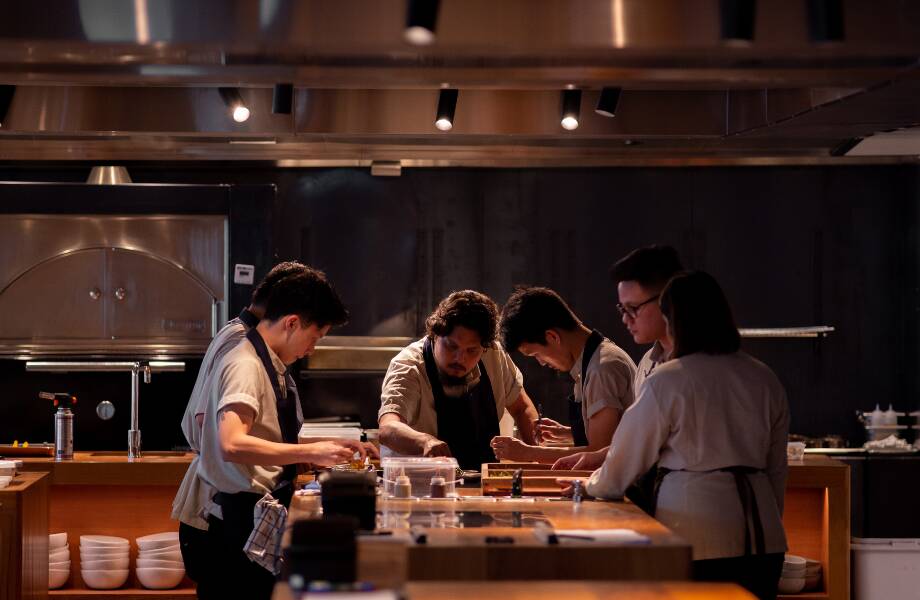Spend a little bit of time looking at tea and eventually you will come across the term “high mountain.” Tea companies throw around this term — referring to tea grown at 1,000 meters and above — so often that it might seem like the higher the altitude a tea is grown, the better.
What if I were to tell you it was a little more complicated than that? What if I were to tell you that while altitude can be one of the main factors that go into terroir, it’s not the most important? Higher isn’t always better.
Let’s take a trip to Nannuo Mountain in Yunnan. Nannuo is a popular mountain for producing raw Pu’er tea, with peaks at 1,900 meters, the better teas being grown toward the top of the mountain. What changes as we go toward the peak?
A few things begin to happen. A major change is the temperature. As you go farther up, the air gets colder, especially at night. This is beneficial for growing tea because cool air slows the growth of the tea plant and allows for it to build up nutrients during the night. This also prevents the leaves from growing too big and becoming unusable for premium tea. In places like Yunnan, the sea-level climate is too hot, so you have to go up to find the right temperature.
Another major change from the bottom of the mountain to the top is soil. The soil higher up tends to be more sandy, better for water drainage, while at the bottom the soil tends to be more of a clay soil that is thicker, denser.
Human intervention has also affected soil at different altitudes. Farmers have been using fertilizers of some sort for thousands of years. Soil at sea level is much more fertilized than at the top for the simple reason that farmers don’t always want to carry giant bags of fertilizers up a giant slope. Remember, good soil is soil that makes the plant struggle to be alive. Just like people, when the tea plant struggles, it becomes stronger. Therefore, soil that has generations of fertilizers worked into it will be too nutritious for the plant to struggle, and thus not yield high-quality tea.
But, higher isn’t always better. Let’s travel to Hunan province, to the island of Jun Shan, home of Jun Shan Yin Zhen.
While there are many replicas and fake Jun Shan Yin Zhens, the real one is extremely rare and comes from the small island of Jun Shan. The real Jun Shan Yin Zhen is bought up almost completely by the government and is rarely available to the open market. What is the elevation of this extremely rare, highly expensive tea? 36 meters. Of course, there is another factor at play here: the home of Jun Shan Yin Zhen is relatively north.
In the north, you don’t really need high altitudes to have cooler nights. They happen naturally. As for the soil and other key factors of Jun Shan, while I do not know the exact details, I can assume if the government has held on to that land, taking most of the tea for themselves, it must be good.
High altitude is a way of achieving good terroir in an area that might not normally have it. But if you look at some of the most famous places for tea production, you find that the highest points are not the best. For example, within Wuyi Scenic park, home to Yan Cha (Wuyi Shan oolongs), there are many peaks and valleys. And while the highest peak, San Yan Feng, produces good tea, it doesn’t sell for nearly the same price as the tea — the oolong Shui Xian — produced at a lower point, at Niu Leng Keng.
I used to work in a Chinese restaurant, and one day a cook and other server were talking about tea. “Wow,” said one of the servers about one of the teas on our menu. “This tea is grown at high altitudes.”
The cook, who was Chinese, rolled her eyes.
It seems these days as though “high mountain” tea is this special class of tea, high above all the rest. But the cook understood two things. One, most tea is grown at high altitudes. Two, this doesn’t say nearly enough about the tea.
Merely coming from a high altitude doesn’t make a tea good, there are other factors that should be understood. This article is by no means written to downplay the effects of high altitude on tea. It is written to help you understand what is a high mountain, why it might be important, and when it really isn’t.
| Column Archive |

















